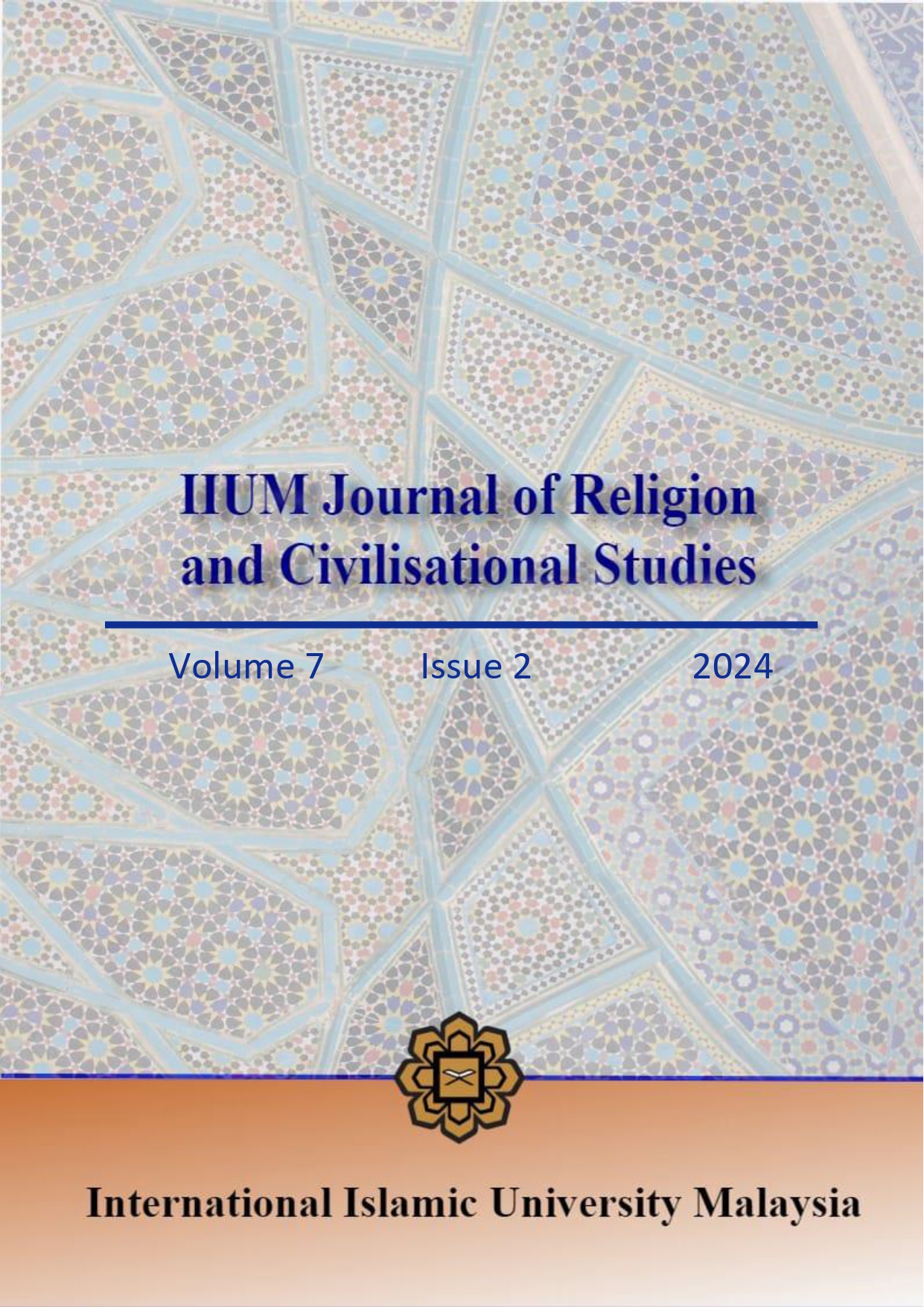Some Similarities between the Creation of Sarajevo and Prophet Muhammad’s Development of Madinah
DOI:
https://doi.org/10.31436/ijrcs.v7i2.342Keywords:
Sarajevo, Madinah, Prophet’s mosque, Sultan’s mosque (Careva džamija), institutionsAbstract
This article explores how the creation of Sarajevo was influenced by Prophet Muhammad’s planning and development of the city of Madinah. The article concludes that despite being over eight centuries apart, the foundational histories of these two cities share more than a few similarities. This is because the Prophet’s urbanisation efforts in Madinah are considered part of his Sunnah, which Muslims are encouraged to follow. The parallels between the two cities focus on three main aspects: the priority of building a central mosque, which acted as a catalyst for growth; the strategic location of the mosque, neither away from nor in the midst of existing settlements, with the intention of promoting justice and social cohesion; and the interconnectedness of the mosque with other social institutions, emphasising the importance of the ideological institutional harmony for progress. The research methodology combined descriptive, interpretative, and analytical historical approaches.
References
Akgunduz, A. and Ozturk, S. (2011). Ottoman history: Misperceptions and truths. Rotterdam: IUR Press.
Bašagić, S. (1900). Kratka uputa u Prošlost Bosne i Hercegovine (A brief introduction to the History of Bosnia and Herzegovina). Sarajevo: Vlastita Naklada.
Berber, N. (2010). Unveiling Bosnia-Herzegovina in British travel literature (1844-1912). Pisa: Pisa University Press.
Celebi, E. (1967). Putopis - odlomci o Jugoslavenskim Zemljama (Book oftTravels - Passages about the Yugoslav Lands). (H. Šabanović, Trans.) Sarajevo: Svjetlost.
Donia, R. J. (2006). Sarajevo: Biografija grada (Sarajevo: A biography). (D. Valenta, Trans.) Sarajevo: Institut za Istoriju.
Fine, J. V. A. (1996). The medieval and Ottoman roots of modern Bosnian society. In M. Pinson (Ed.), The Muslims of Bosnia-Herzegovina: Their historic development from the Middle Ages to the dissolution of Yugoslavia (pp. 1-21). Cambridge: Harvard University Press.
Handžić, M. (1940). Islamizacija Bosne i Hercegovine (Islamization of Bosnia and Hercegovina). Sarajevo: Islamska Dionička Štamparija.
Haveric, Dz. (2008). Islamisation of Bosnia. Saarbrucken: VDM Verlag Dr. Muller.
Ibn Hisham. (2013). The Prophetic biography. Beirut: Dar al-Kutub al-Ilmiyyah.
Ibn Kathir. (n.d.). Tafsir Ibn Kathir. https://www.altafsir.com/Tafasir.asp?tMadhNo=1&tTafsirNo=7&tSoraNo=17&tAyahNo=80&tDisplay=yes&UserProfile=0&LanguageId=1, accessed on July 12, 2024.
Ibn Khaldun. (1967). The muqaddimah. (F. Rosenthal, Trans.) Princeton: Princeton University Press.
Imamović, M. (1997). Historija Bošnjaka (History of Bosniaks). Sarajevo: “Preporod”.
Kiani, M. Y. and Kleiss, W. (n.d.). Caravansary. In Encyclopædia Iranica, IV/7 (pp. 798-802). Retrieved July 6, 2024, from http://www.iranicaonline.org/articles/caravansary
Kotkin, J. (n.d.). Islamic cities: Can the past be the key to the future? Retrieved July 12, 2024, from http:/www.islamicity.com/articles/Articles.asp?ref=GL0306-1991
Lavrin, J. (1929). The Bogomils and Bogomilism. The Slavonic and East European Review, 8(23), 269-283. https://www.jstor.org/stable/4202396
Maksudoglu, M. (1999). Osmanli history, 1289-1922, based on Osmanli sources. Kuala Lumpur: International Islamic University Malaysia.
Malcolm, N. (1994). Bosnia: A short history. New York: New York University Press.
Mandić, M. (n.d.). Postanak Sarajeva (The rise of Sarajevo). Retrieved July 6, 2024, from https://hrcak.srce.hr/file/90233
Mehmedović, A. (2005). Gazi Husrev-beg i njegove zadužbine (Gazi Husrev-beg and his endowments). Sarajevo: Cobiss.
Muvekkit-Hadžihuseinović, S. S. (1998). Povijest Bosne (History of Bosnia). Sarajevo: El-Kalem.
Obolensky, D. (1972). The Bogomils: A study in Balkan Neo-Manichaeism. Twickenham: Anthony C. Hall.
Omer, S. (2004). The Prophet Muhammad and urbanization of Madinah. Kuala Lumpur: International Islamic University Malaysia.
Salihspahić, Dž. (1983). Sarajevo do Gazi Husrev-Bega (Sarajevo before Gazi Husrev-Beg). Anali Gazi Husrev-Begove Biblioteke, 6(9-10), 181–206. https://www.anali-ghb.com/index.php/aghb/article/view/487
Al-Samahūdī. (1997). Wafā’ al-wafā. Beirut: Dar Ihya’ al-Turath al-‘Arabi.
Spinka, M. (1968). A history of Christianity in the Balkans. Claremont: Archon Books.
Šabanović, H. (1982). Bosanski Pašaluk (Bosnian Pašaluk). Sarajevo: Svjetlost.
Šabanović, H. (1964). Krajište Isa-bega Ishakovića Zbirni Katastarski Popis iz 1455. Godine (Krajište or Frontier of Isa-beg Ishaković summary of Cadastral Census from 1455). Sarajevo: Orijentalni Institut Sarajevo.
Šabanović, H. (n.d.). Postanak i razvoj Sarajeva (The Origin and Growth of Sarajevo). Sarajevo: n.p.
Šabić, L. and Handžić, L. K. (2022). Development of urban residential zones of Sarajevo during the Ottoman period from 1455-1604. World Multidisciplinary Civil Engineering-Architecture-Urban Planning Symposium (WMCAUS) 2021. AIP Conference Proceedings 2574, 060001 (2022). pp. 1-12. Retrieved July 7, 2024, from https://doi.org/10.1063/5.0105299
Škaljić, A. (1966). Turcizmi u Srpskohrvatskom Jeziku (Turkish words in Serbo-Croatian Language). Sarajevo: Svjetlost Izdavačko Preduzeće.
Tanović, B. (2010). Historija Bosne u Okviru Osmanskog Carstva (History of Bosnia within the Ottoman Empire). Sarajevo: Svjetlost.
Al-Umari, A. D. (1995). Madinan society at the time of the Prophet. Herndon: The International Institute of Islamic Thought.
Uthman, M. A. S. (1999). Al-Madinah al-Islamiyyah (the Islamic City). Kuwait: ‘Alam al-Ma‘rifah.
Yanich, V. and Hankey, C.P. (1921). Lives of the Serbian saints. New York: The Macmillan Company.
Zlatar, B. (1996). Zlatno doba Sarajeva (The golden age of Sarajevo). Sarajevo: Svjetlost.
Zlatar, B. (2006). Vakuf Gazi Mehmed-bega Isabegovića u Sarajevu (Gazi Mehmed-beg Isabegović’s endowment in Sarajevo). Sarajevo: n.p.








